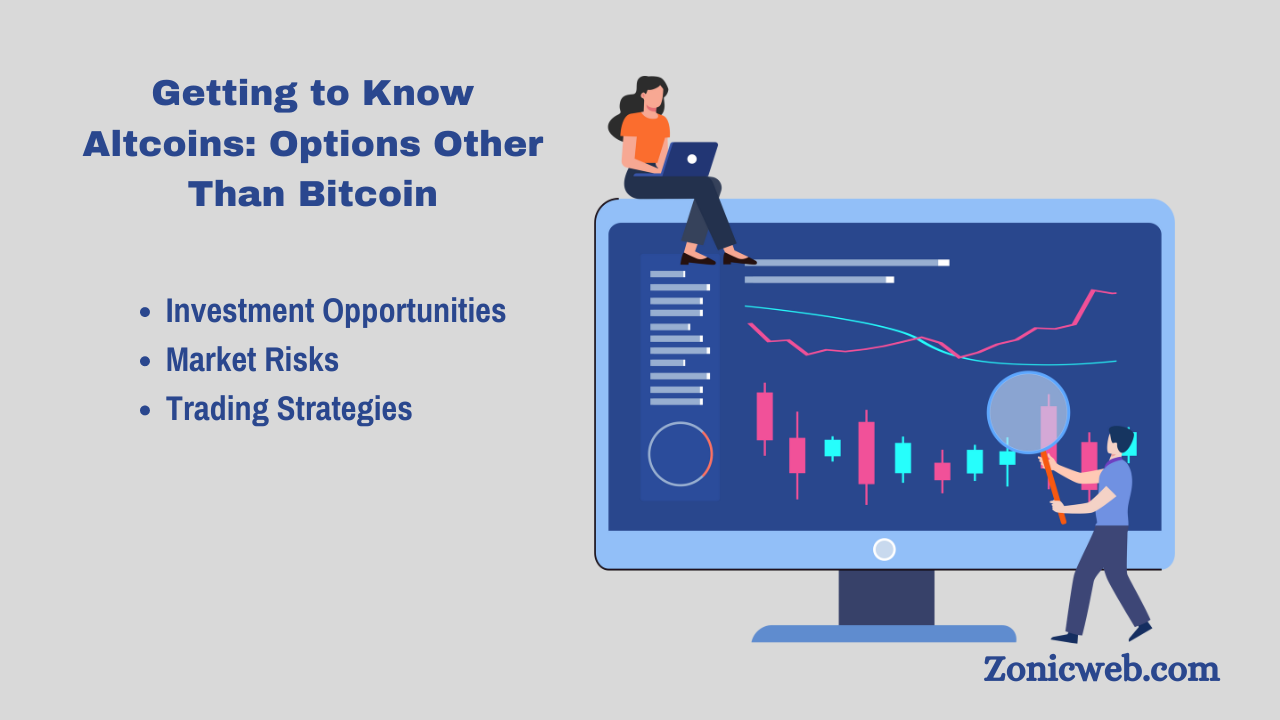Alternative cryptocurrencies to Bitcoin, or altcoins, offer investors and traders unique opportunities for portfolio diversification. While Bitcoin is still the most well-known and widely used cryptocurrency, various altcoins have gained popularity in recent years because of their unique features, application scenarios, and growth potential. Beyond Bitcoin, understanding altcoins can open up new investment and trading strategies.
The possibility of higher returns is one of the main reasons to investigate alternative cryptocurrencies. The fact that many altcoins are still in their infancy indicates that they have not yet realized their full market potential. This comes with more risk, but it also means that, in the event that a particular altcoin gains popularity or solves a pressing problem, there may be opportunities for significant gains. Because of their capacity to facilitate decentralized applications (dApps) and smart contracts, altcoins like Ethereum have experienced significant growth. Ethereum’s versatility makes it a formidable rival to Bitcoin and draws developers and investors alike.
Within the cryptocurrency ecosystem, various altcoins serve various functions and specialized markets. Some are made with privacy in mind, while others are focused on scalability, transaction speed, or particular industries like gaming or finance. For instance, Monero’s emphasis on anonymity and privacy during transactions makes it appealing to users looking for discretion. In a similar vein, Chainlink offers decentralized oracle services that link real-world data and smart contracts, making blockchain applications more functional. Investors are able to identify projects that are in line with their interests and investment objectives by comprehending the distinct characteristics and application scenarios of altcoins.
Portfolio diversification is also made possible by the variety of altcoins. Instead of focusing solely on Bitcoin, investors can spread out their risk by investing in multiple altcoins. Because different altcoins may respond differently to market conditions, this strategy can lessen the impact of market volatility. Additionally, altcoins frequently see significant price increases during bull markets, sometimes exceeding Bitcoin’s. Investors may be able to benefit greatly from this phenomenon, which is also known as “altseason.”
However, there are difficulties associated with investing in altcoins. The market for cryptocurrencies is well-known for its extreme volatility, and altcoins can be even more susceptible to sudden price changes. Because many altcoins’ market capitalizations are smaller than Bitcoin’s, there is less liquidity and more price manipulation. Before investing in any altcoin, investors should do thorough research and due diligence on the project’s development team, technology, use case, and community support. Investors can make better decisions by reading the whitepaper and learning about the technology behind it.
Altcoin performance is also heavily influenced by sentiment in the market. The price of an altcoin can be significantly influenced by news, social media trends, and community participation. Investors should stay up to date on developments in the cryptocurrency industry and avoid investments based on hype. Poor investment decisions can result from solely relying on buzz or speculation from social media. Instead, when choosing which altcoins to invest in, investors ought to concentrate on fundamental analysis and the potential for the long term.
Additionally, the regulatory environment surrounding cryptocurrencies is constantly changing. Altcoins may face unique difficulties as governments around the world debate how to classify and regulate cryptocurrencies. Investors ought to be aware of the potential risks posed by regulations and how they might affect particular altcoins. The long-term viability of some projects may be affected by the need to modify their business models to comply with shifting regulations. Investors may find it easier to navigate this complex environment by staying up to date on new regulatory developments.
Trading altcoins can be a profitable strategy in addition to investing for those who are well-versed in market dynamics and technical analysis. Swing trading and day trading are two types of trading strategies that allow traders to profit from price shifts. Strong price trends for many altcoins make it possible for traders to effectively enter and exit positions. Trading altcoins, on the other hand, necessitates discipline because of the volatility that can result in rapid gains or losses.
Yield farming and stakestaking are two additional options available in the altcoin industry. By locking their assets in a liquidity pool or staking them in a network, investors can earn passive income from many altcoins. Altcoins are an appealing option for investors looking for income because this practice can provide additional returns in addition to capital appreciation.
Investing outside of Bitcoin can benefit greatly from an understanding of alternative cryptocurrencies. Altcoins present a vibrant landscape for exploration with the potential for significant returns, a variety of use cases, and the opportunity to participate in innovative projects. However, investors should exercise caution when investing in altcoins by thoroughly researching the risks involved. Individuals can navigate the altcoin market and potentially reap the benefits of this dynamic sector within the cryptocurrency space by remaining informed and employing a disciplined investment strategy.
